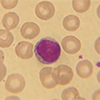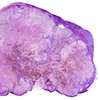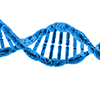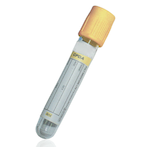Follicle Stimulating Hormone (FSH)
Specimen Volume
1 mL bloodSample Preparation
Centrifuge
Turnaround Time
1 daySample Processing In Laboratory
Usual
Sample Stability
Sample is stable for up to 14 days at 2-8°C for up to 14 days. Sample is stable for up to 6 months at -20°C
General Information
In females, FSH stimulates follicle development and production of oestradiol and other oestrogens during the follicular phase of the menstrual cycle. FSH acts synergistically with LH to cause ovulation. In males FSH stimulates spermatogenesis. Increased concentrations of the gonadotrophins are seen in ovarian failure in women, whether pathological or after the natural menopause. High concentrations of FSH are seen in azoospermic men and LH is increased if testosterone secretion is decreased.
Patient Preparation
Samples from patients receiving high biotin doses (i.e. >5 mg/day) should be taken at least 8 hours post dose. In rare cases, interference due to extremely high titers of antibodies to analyte‑specific antibodies, streptavidin or ruthenium can occur. These effects are minimized by suitable test design, however, please interpret results in conjunction with the patients medical history, clinical examination and other findings, and contact the laboratory if interference is suspected. Please also inform the laboratory if the patient has been treated with monoclonal mouse antibodies or may have received them for diagnostic purposes.
Notes
Follicle Stimulating Hormone (FSH), like Luteinising Hormone (LH), belongs to the gonadotropin family. They synergistically regulate and stimulate the growth and function of the ovaries and testes. FSH is secreted by the anterior pituitary in response to gonadotrophin releasing hormone (GnRH) secreted by the hypothalamus. In both males and females, FSH secretion is regulated by a balance of positive and negative feedback mechanisms involving the hypothalamic-pituitary axis, the reproductive organs, and the pituitary and sex steroid hormones.
Reference Range
Males
0.95 - 11.95 IU/L
Females
Follicular phase: 3.03 - 8.08 IU/L
Mid-cycle: 2.55 - 16.69 IU/L
Luteal phase: 1.38 - 5.47 IU/L
Post-menopausal: 26.72 - 133.41 IU/L
Source of Reference Range
Abbott DiagnosticsSpecifications
-
EQA Status:
NEQAS
- EQAS Scheme: Yes








